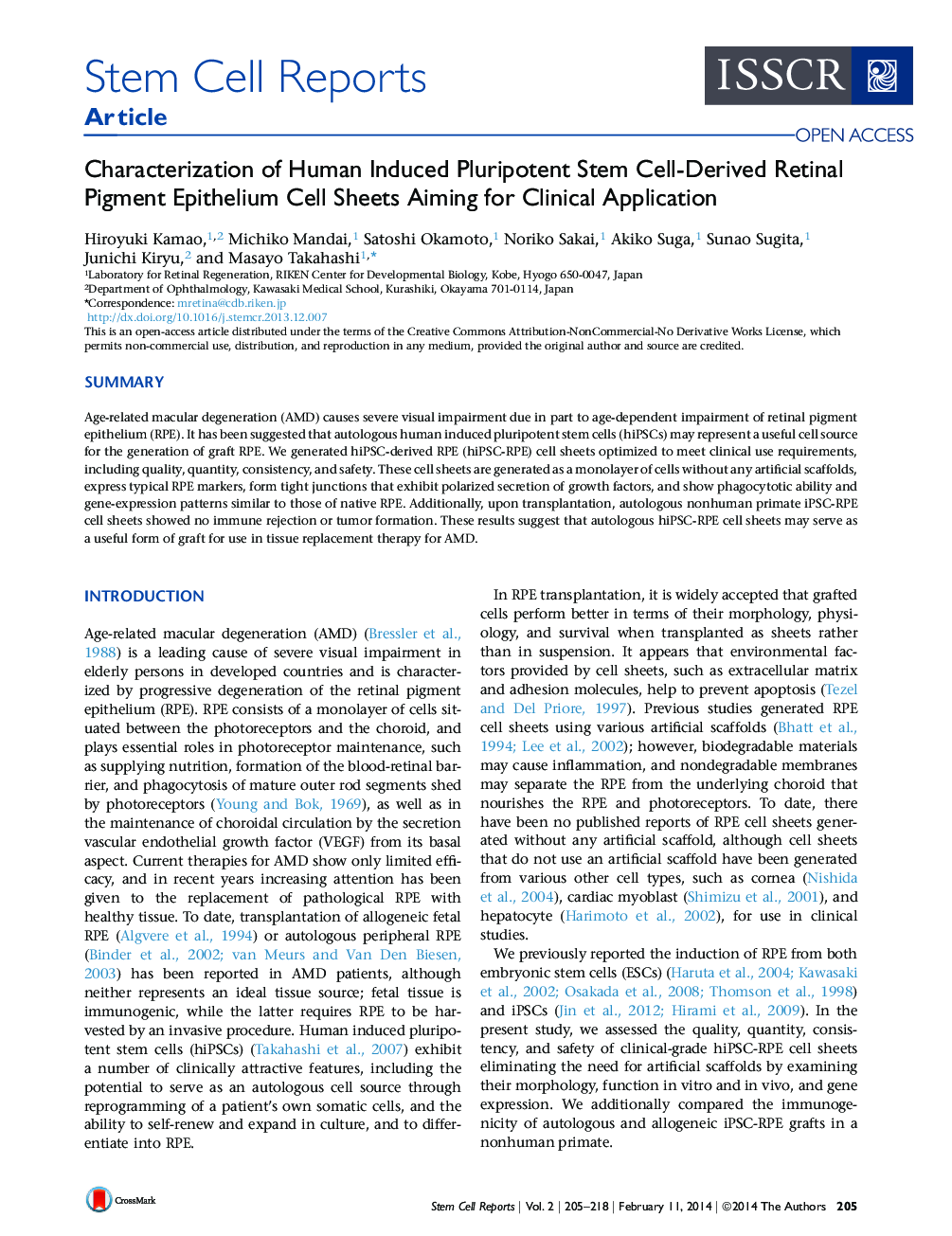| Article ID | Journal | Published Year | Pages | File Type |
|---|---|---|---|---|
| 2093465 | Stem Cell Reports | 2014 | 14 Pages |
•hiPSC-RPE cell sheets show characteristics similar to those of native RPE•A hiPSC-RPE sheet is sufficient to transplant a patient•All hiPSC-RPEs show gene-expression patterns similar to native RPE•Autologous nonhuman primate iPSC-RPE cell sheets show no rejection or tumor
SummaryAge-related macular degeneration (AMD) causes severe visual impairment due in part to age-dependent impairment of retinal pigment epithelium (RPE). It has been suggested that autologous human induced pluripotent stem cells (hiPSCs) may represent a useful cell source for the generation of graft RPE. We generated hiPSC-derived RPE (hiPSC-RPE) cell sheets optimized to meet clinical use requirements, including quality, quantity, consistency, and safety. These cell sheets are generated as a monolayer of cells without any artificial scaffolds, express typical RPE markers, form tight junctions that exhibit polarized secretion of growth factors, and show phagocytotic ability and gene-expression patterns similar to those of native RPE. Additionally, upon transplantation, autologous nonhuman primate iPSC-RPE cell sheets showed no immune rejection or tumor formation. These results suggest that autologous hiPSC-RPE cell sheets may serve as a useful form of graft for use in tissue replacement therapy for AMD.
Graphical AbstractFigure optionsDownload full-size imageDownload as PowerPoint slide
